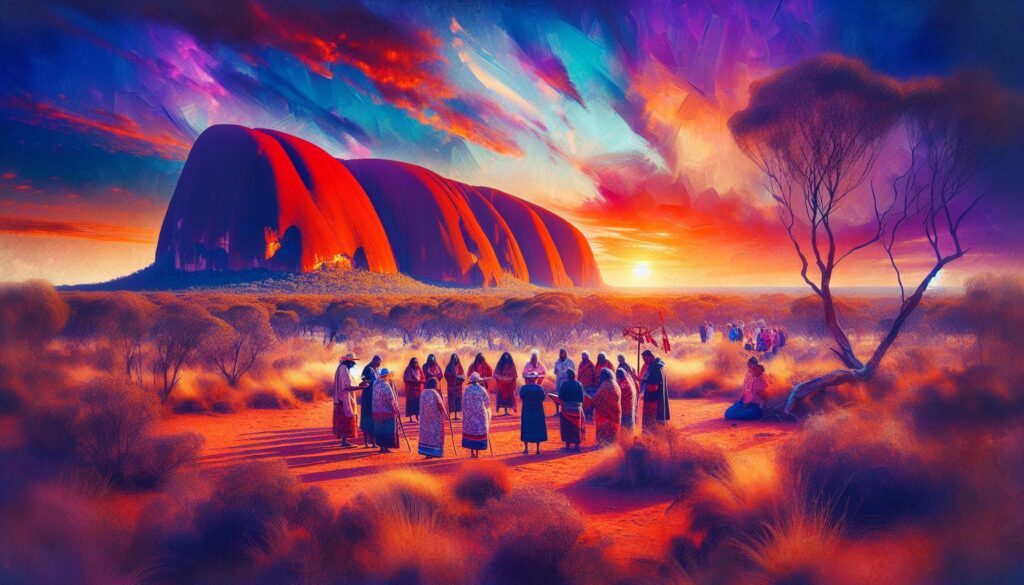Uluru stands majestically in the heart of Australia, captivating all who visit with its stunning presence. But beyond its striking appearance, Uluru holds profound significance in Aboriginal folklore.
As I delved into the stories of the Anangu people, I discovered that Uluru is more than just a landmark. It’s a sacred site teeming with ancient tales that explain the land and its creation. Exploring these rich narratives reveals the deep connection between the people and this natural wonder.
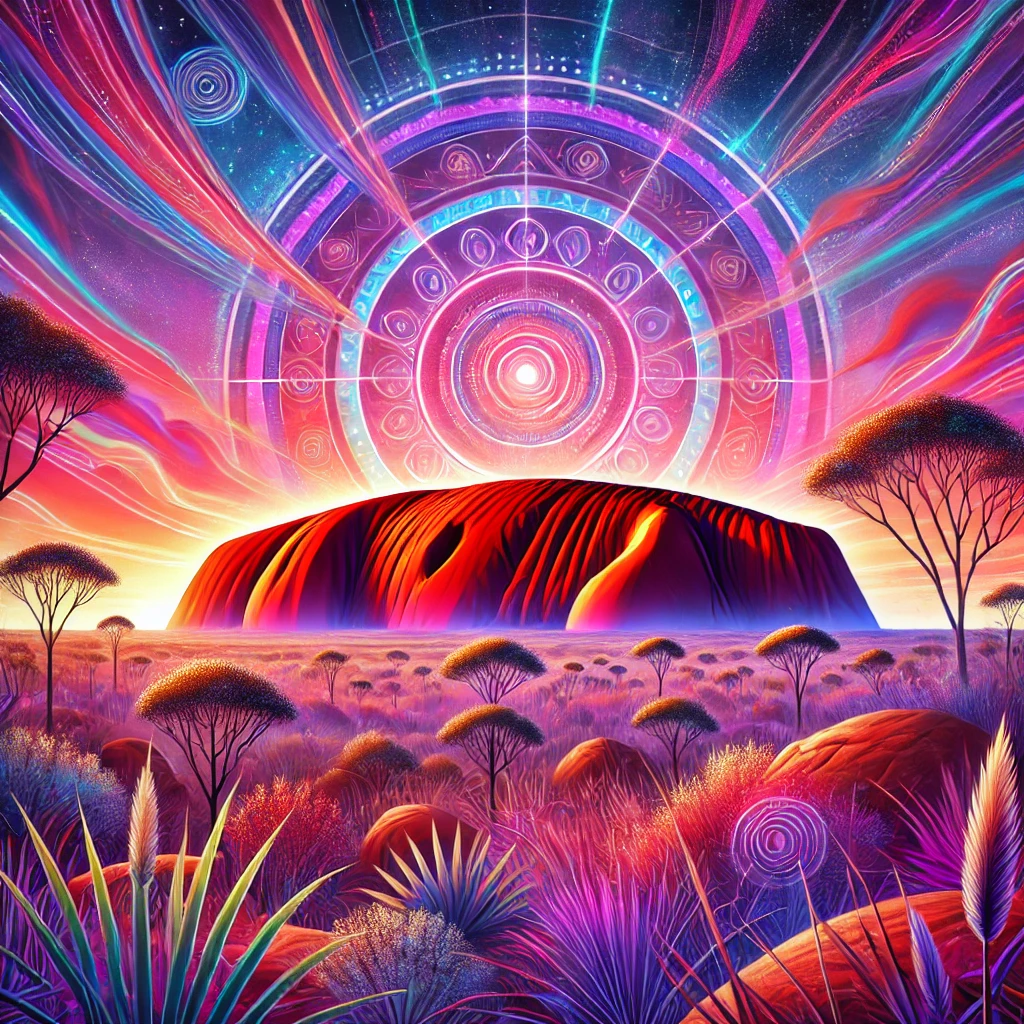
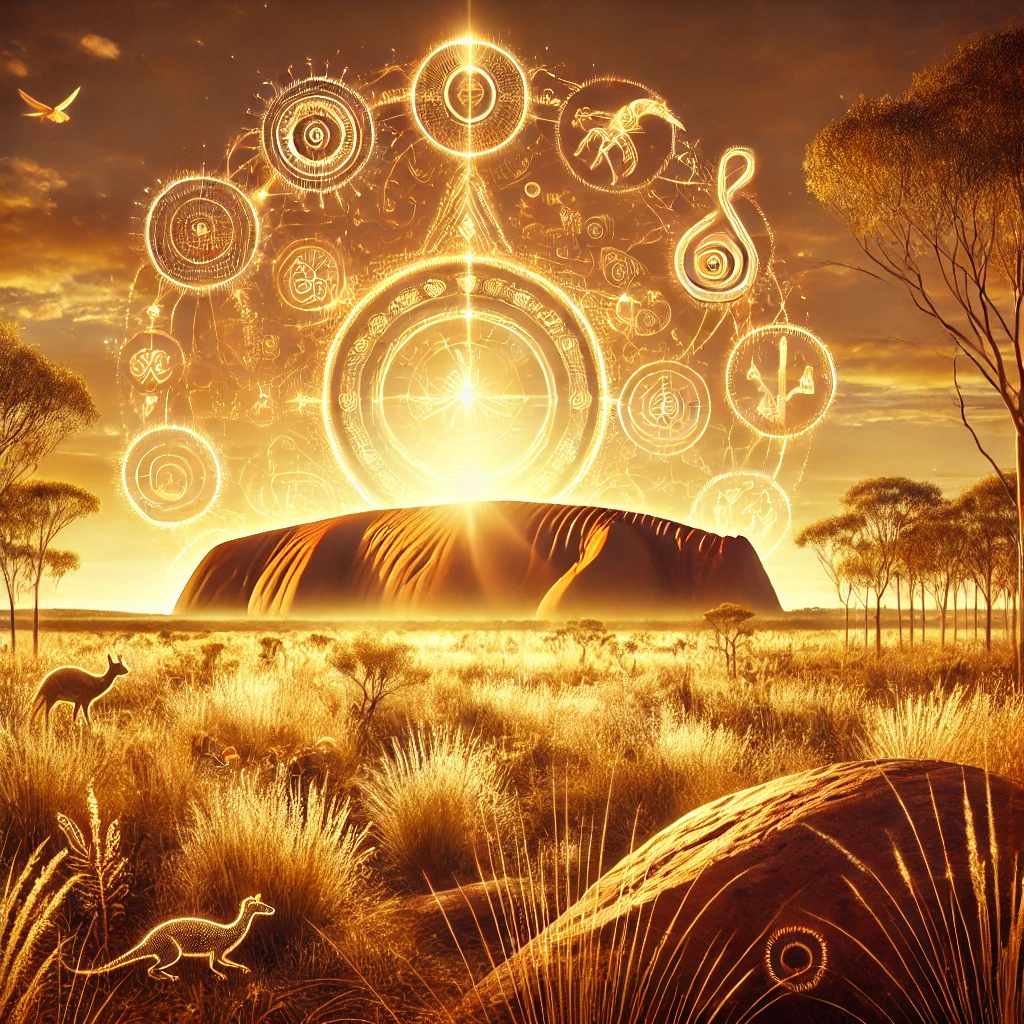
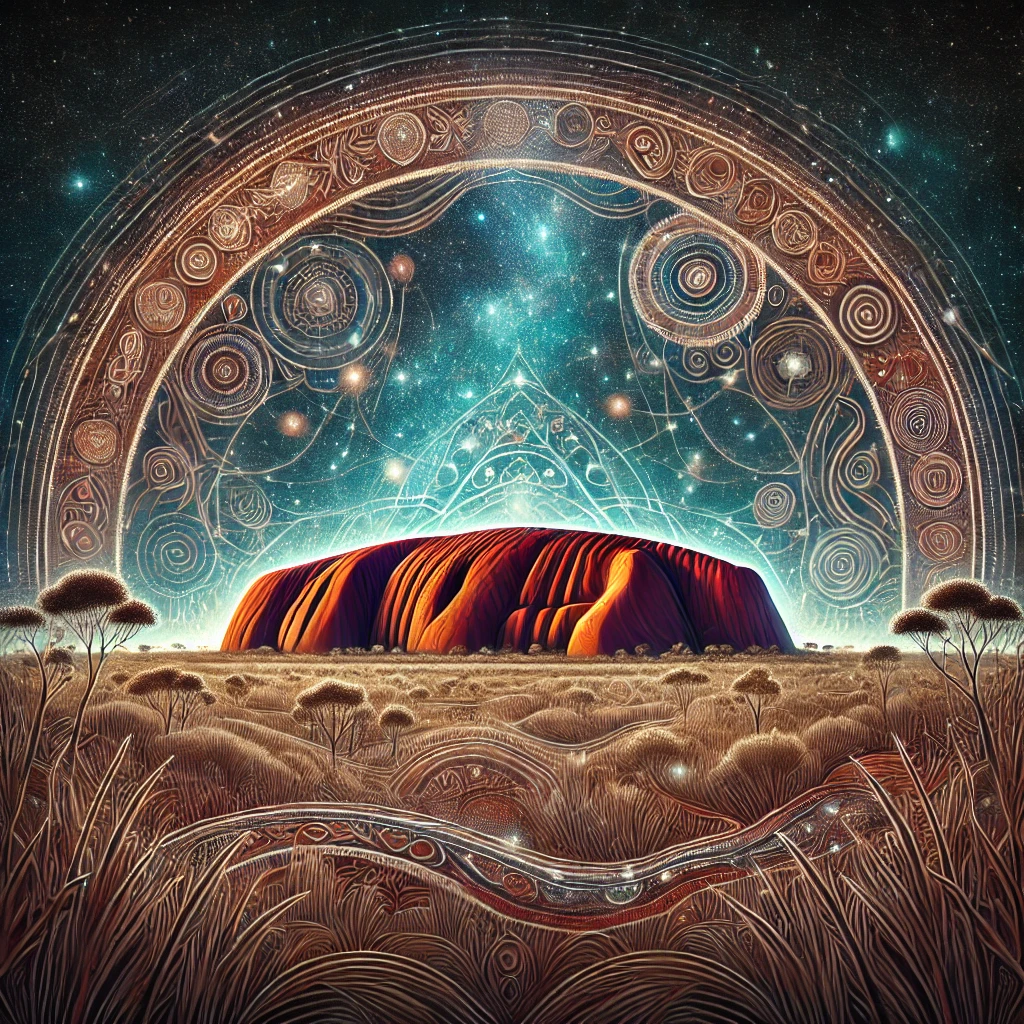
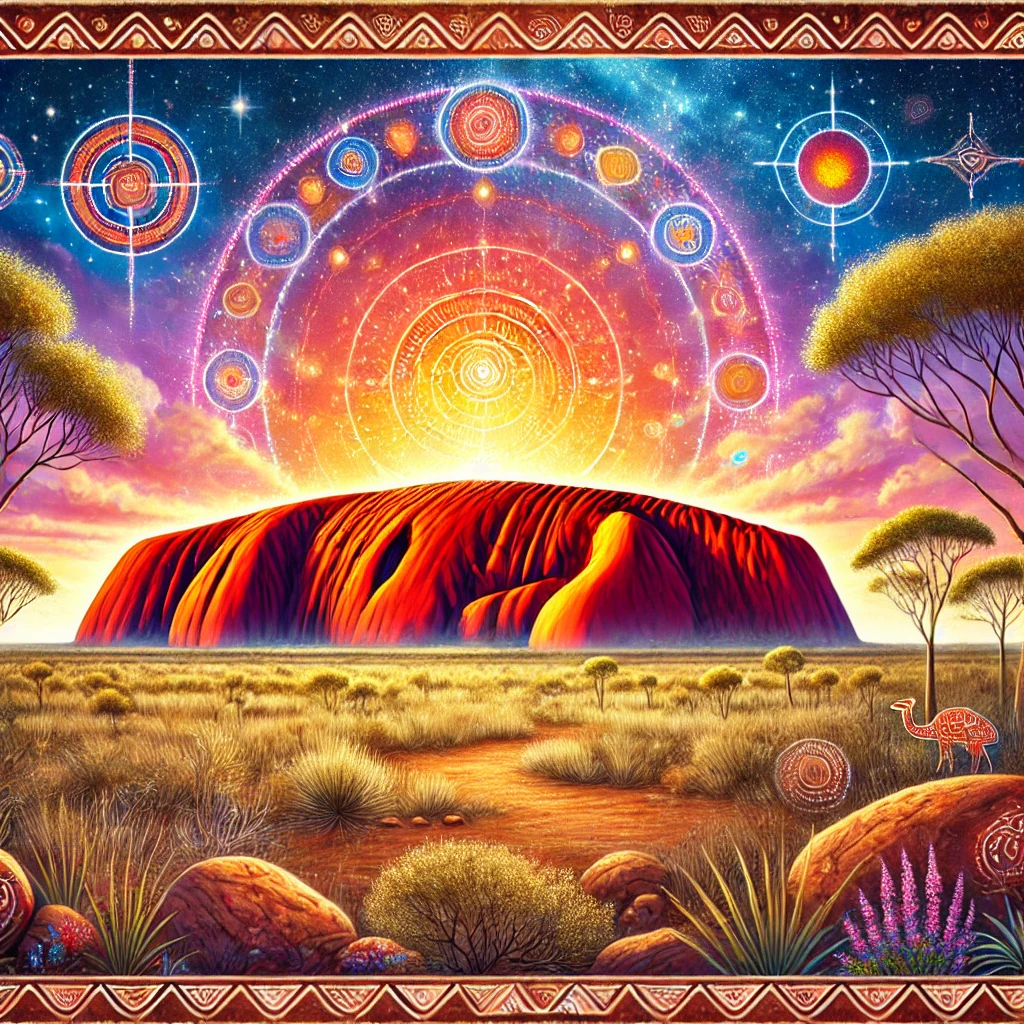
Understanding Uluru through Aboriginal folklore offers a unique perspective that honours its cultural importance. Join me as we uncover the legends and meanings that make Uluru a symbol of heritage and spirituality.
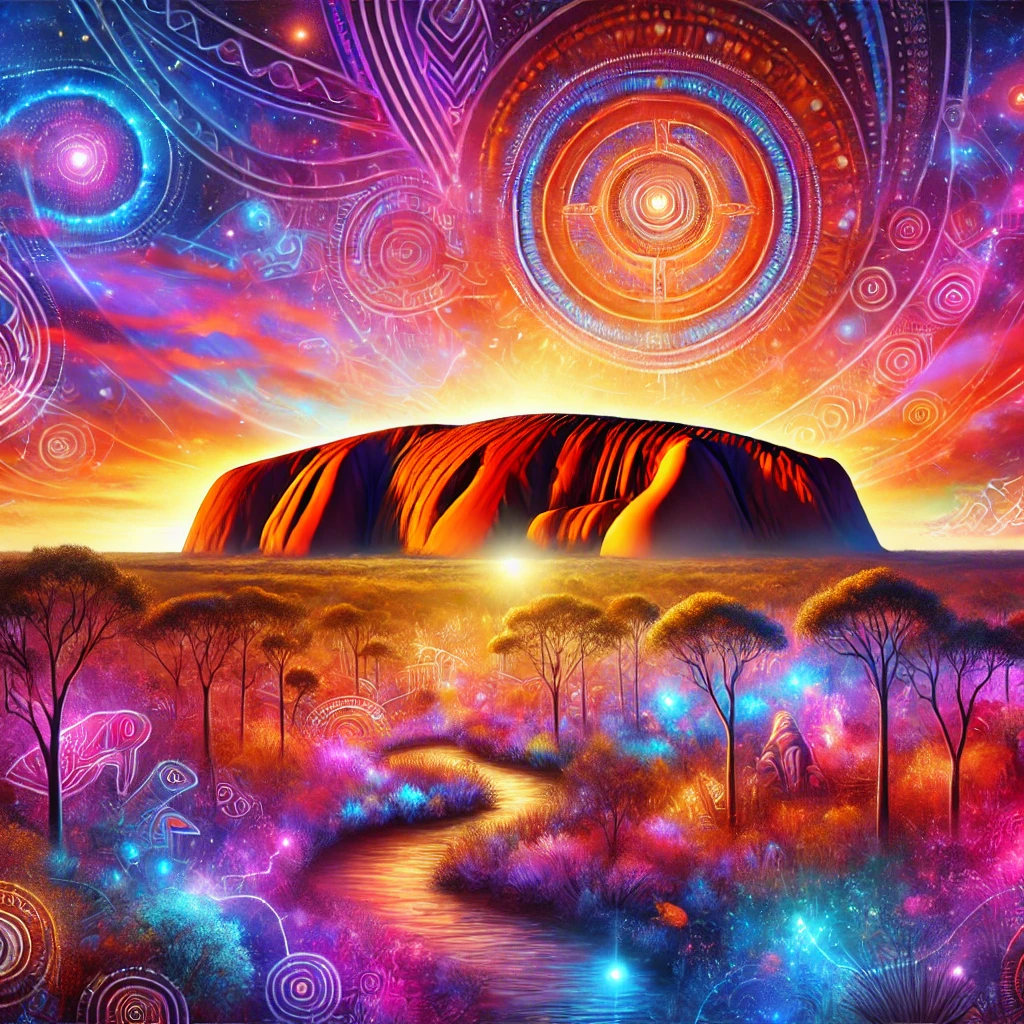
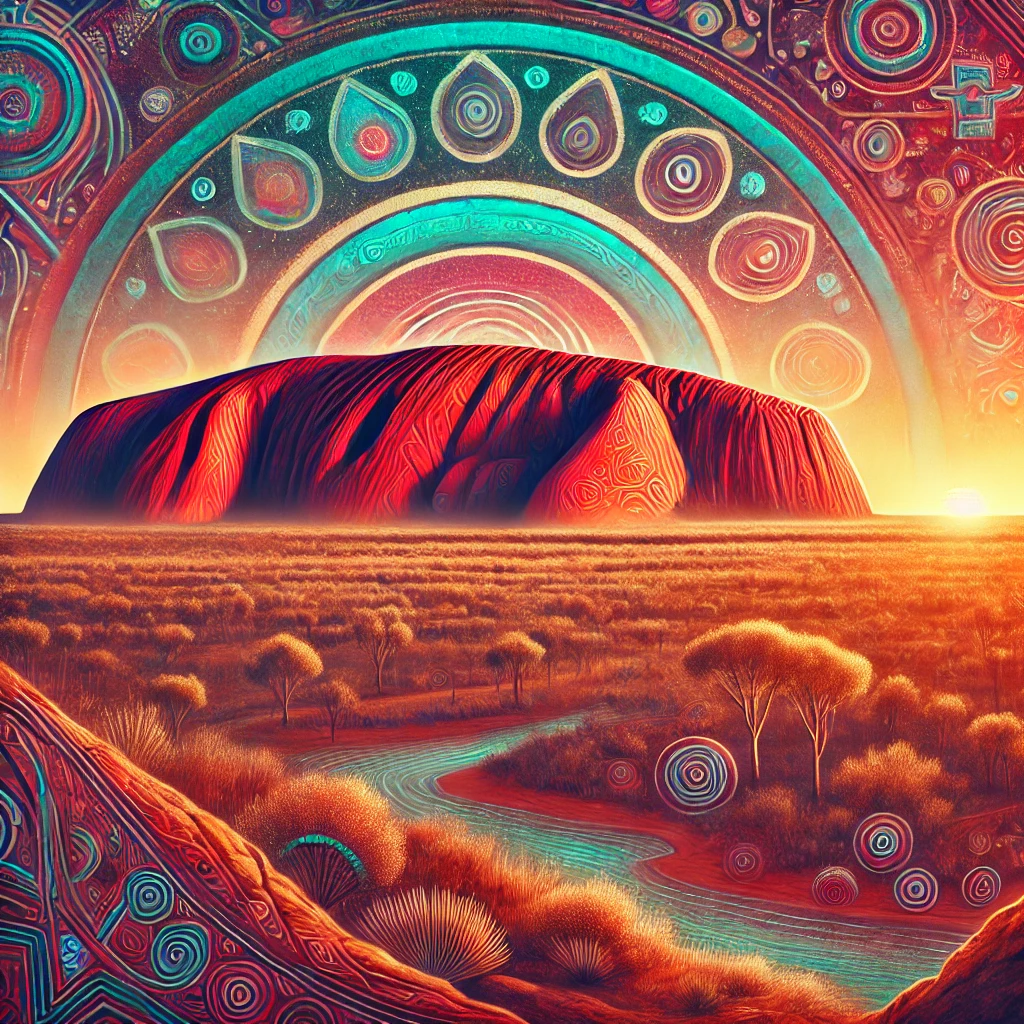
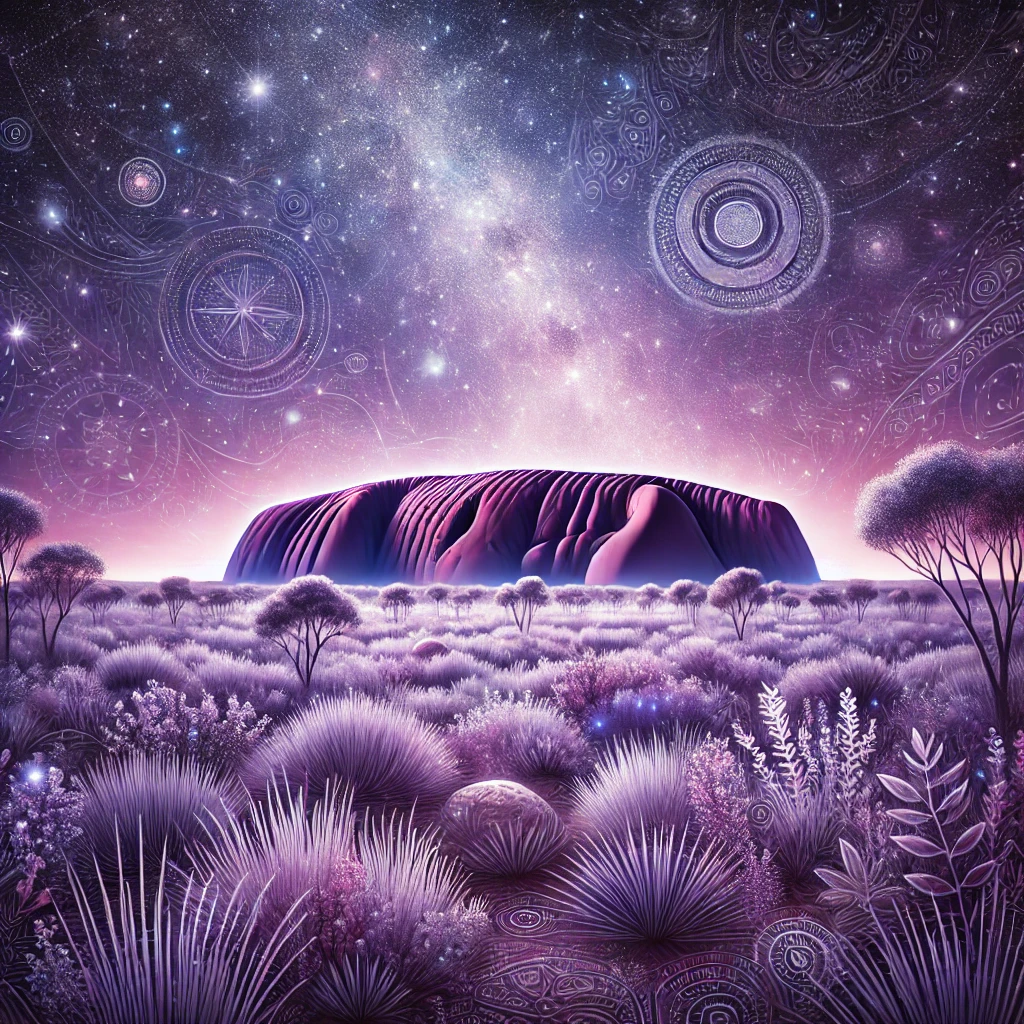
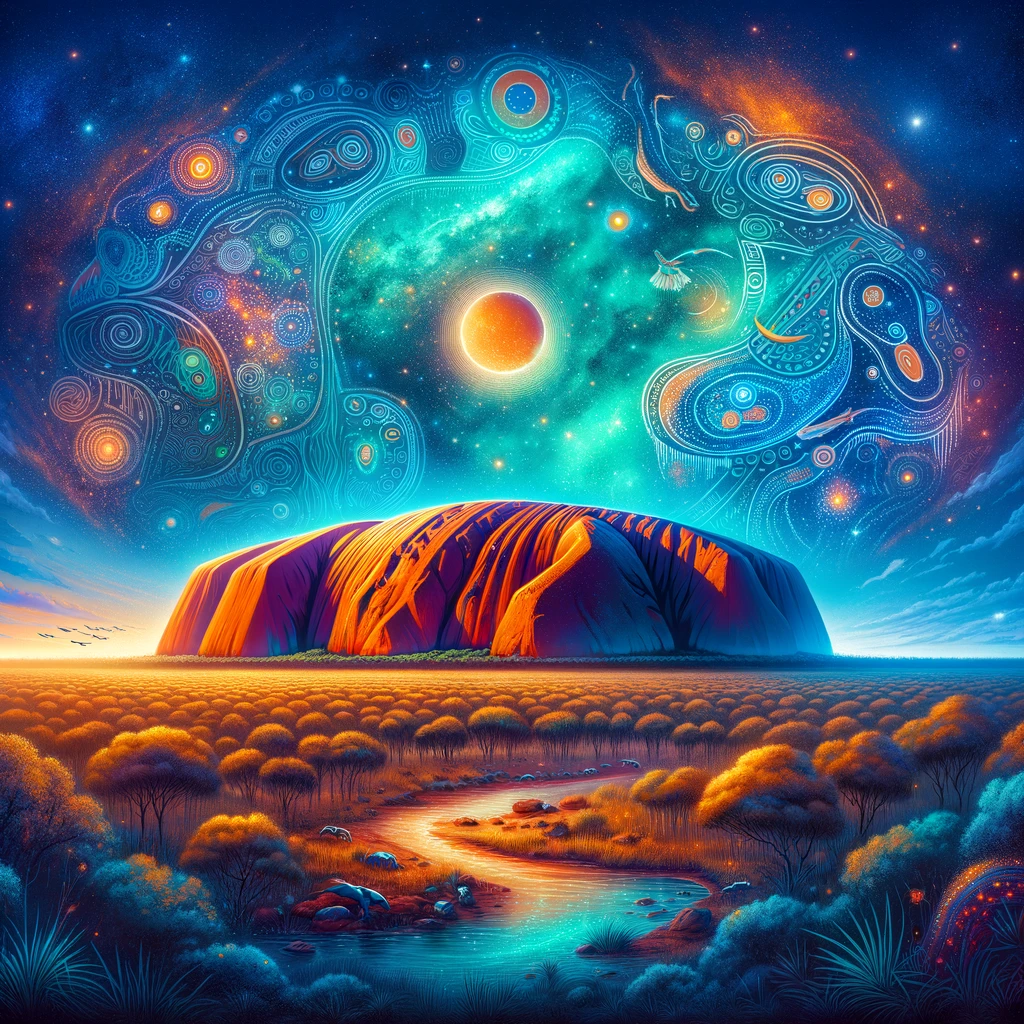
The Significance of Uluru in Aboriginal Folklore
Uluru holds a central place in Aboriginal folklore, embodying cultural, spiritual, and historical values for the Anangu people.
Dreamtime Legends
Uluru originated during the Dreamtime, a primordial era when ancestral spirits shaped the landscape. These spirits traversed the land, creating features like Uluru by their actions. Each aspect of Uluru’s formation is linked to specific stories that explain its unique structure and significance.
Spiritual Beliefs
Uluru serves as a sacred site where the Anangu perform rituals and ceremonies. It represents a living cultural landscape, maintaining the connection between the people and their ancestors. The Anangu view the protection and management of Uluru as their duty, ensuring that their traditions and stories remain intact for future generations.
Cultural Practices Associated with Uluru
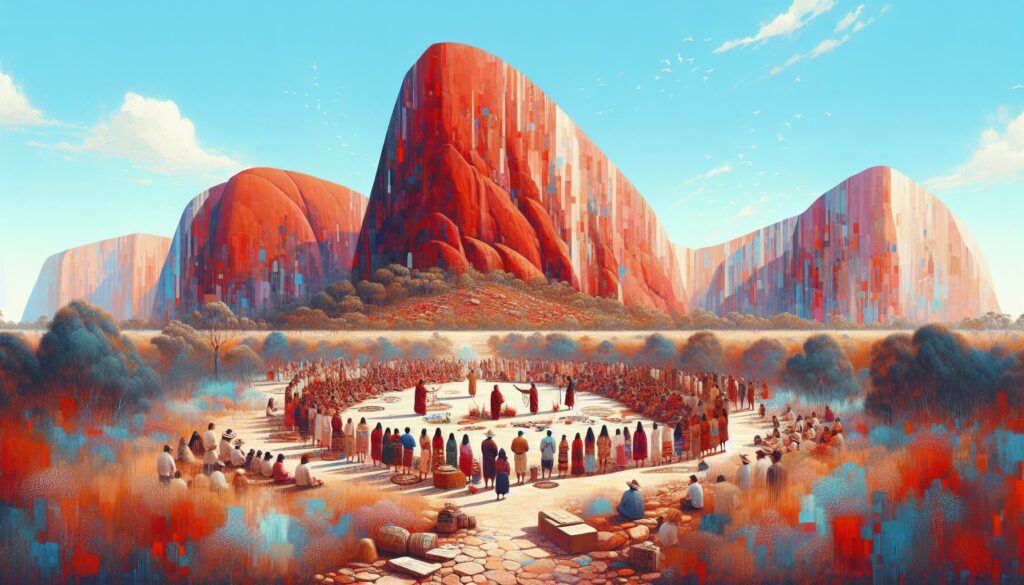
I explore the cultural practices that strengthen the Anangu people’s bond with Uluru, highlighting their spiritual and communal responsibilities.
Ceremonial Activities
I participate in various ceremonies that honour Uluru’s sacredness. These rituals, often conducted during significant life events, reinforce the Anangu’s connection to the land. For example, the Tjukurpa ceremonies celebrate ancestral stories, ensuring traditions are passed down through generations[2][3]. Additionally, seasonal gatherings mark changes in nature, allowing the community to stay attuned to their environment and maintain harmony with the land.
Storytelling Traditions
I engage in storytelling traditions that preserve the Anangu’s rich folklore. These narratives, rooted in Dreamtime legends, explain the creation of Uluru and its features. By sharing these stories, I help maintain the cultural identity and educate younger members about their heritage[2][3]. Storytelling also serves as a means of transmitting moral lessons and environmental stewardship, ensuring the continuity of knowledge and respect for Uluru.
Historical Perspectives on Uluru
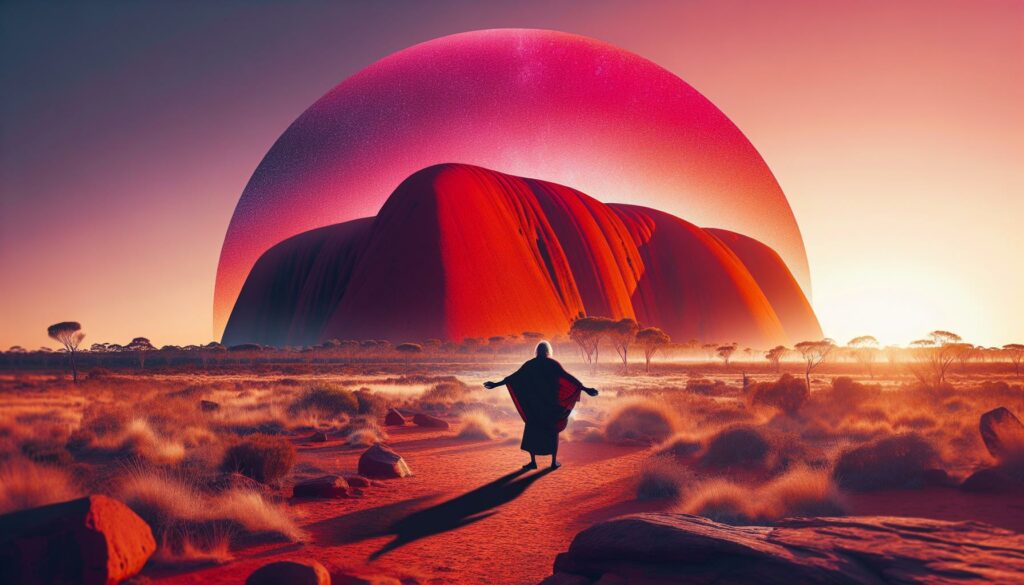
In researching Uluru’s history, I discovered its significance through Indigenous heritage and the changes brought by European settlement.
Aboriginal Connection Through Time
The Anangu people have lived around Uluru for over 30,000 years. Central to their culture are Tjukurpa (Dreamtime) stories, which narrate the creation of Uluru by ancestral beings like Mala (Rufus-Hare Wallaby), Kuniya (Woma Python), and Liru (Poisonous Snake). These narratives explain the landscape’s features, with Uluru’s caves and fissures linked to the activities of these spirits. I learned that the Anangu conduct ceremonies and maintain sacred sites, ensuring their spiritual and cultural connections to the land remain strong.
Impact of European Settlement
European exploration in the 19th century introduced significant changes to Uluru. The area became subject to mining claims and increased tourism, affecting the Anangu’s traditional lifestyle. In 1985, the Australian government returned Uluru to the Anangu through a joint management agreement, recognising their traditional ownership. This partnership allows for the protection of cultural practices and environmental stewardship. Today, Uluru stands as a testament to the resilience of Aboriginal communities and their ability to preserve their heritage amid external pressures.
Uluru’s Natural Features in Folklore
Uluru’s natural landscapes hold profound significance in Aboriginal folklore, reflecting the spiritual connection between the land and the Anangu people.
Geological Legends
Uluru formed through the actions of ancestral beings during the Dreamtime. Each region of Uluru links to specific Dreaming stories. For instance, the southern side emerged from a battle between poisonous and carpet snakes. Meanwhile, Mala, the hare wallaby people, crafted the north-west side. Kuniya, the sand python, shaped another area by leaving her eggs and dancing across the rock.
Flora and Fauna Symbolism
Flora and fauna feature prominently in Uluru’s folklore. Snakes symbolize creation and transformation, as seen in the southern side’s formation. The hare wallabies represent fertility and sustenance, embodying the land’s generosity. Kuniya, the sand python, signifies protection and continuity, ensuring the preservation of Uluru’s sacred sites.
Key Takeaways
- Cultural Significance: Uluru is a central symbol in Aboriginal folklore, embodying the spiritual and historical values of the Anangu people.
- Dreamtime Origins: The formation of Uluru is explained through Dreamtime legends, where ancestral spirits shaped the landscape with their actions.
- Sacred Ceremonies: Uluru serves as a sacred site for rituals and ceremonies, reinforcing the Anangu’s connection to their ancestors and heritage.
- Storytelling Traditions: Oral traditions at Uluru preserve rich folklore, transmitting important moral lessons and environmental stewardship to younger generations.
- Historical Resilience: Despite European settlement challenges, the Anangu have maintained their cultural heritage through joint management agreements, ensuring the protection of Uluru.
- Natural Symbolism: The geological features of Uluru are deeply connected to Aboriginal narratives, reflecting the profound bond between the land and its people.
Conclusion
Exploring Uluru through Aboriginal folklore has deepened my appreciation for its enduring significance. The stories and traditions of the Anangu people reveal a profound connection to the land that goes beyond its striking appearance. Witnessing how Uluru serves as a living cultural landscape inspires a sense of respect and wonder. It’s clear that preserving these traditions is essential for maintaining the rich heritage and spiritual legacy of the Anangu. Uluru stands not only as a natural marvel but also as a testament to the resilience and wisdom of its custodians. This journey into its folklore has truly highlighted the importance of honoring and protecting such sacred sites for future generations.
Frequently Asked Questions
What is Uluru and where is it located?
Uluru is a massive sandstone monolith located in the heart of Australia’s Northern Territory. It is one of the country’s most iconic natural landmarks and holds profound cultural significance for the Anangu people, the traditional owners of the land. Standing 348 meters high and measuring 9.4 kilometers in circumference, Uluru is renowned for its striking appearance, especially during sunrise and sunset when it changes colour dramatically.
Why is Uluru important in Aboriginal folklore?
Uluru is central to Aboriginal folklore, particularly for the Anangu people. It embodies numerous Dreamtime stories that explain the creation of the land and its features. These legends describe the actions of ancestral spirits who shaped Uluru and the surrounding landscape, linking each part of the rock to specific cultural narratives. This deep spiritual connection reinforces the Anangu’s relationship with Uluru as a living cultural landscape.
What are Tjukurpa ceremonies?
Tjukurpa ceremonies are traditional rituals conducted by the Anangu people to honour their ancestral stories and maintain their connection to Uluru. These ceremonies celebrate the Dreamtime legends and mark important seasonal changes, fostering harmony with the natural environment. Through these practices, the Anangu preserve their cultural heritage, transmit knowledge to younger generations, and ensure the continuity of their spiritual and communal responsibilities.
How did European settlement impact Uluru and the Anangu people?
European settlement introduced mining claims and increased tourism to Uluru, disrupting the Anangu’s traditional lifestyle. These changes threatened their cultural practices and the sacredness of the site. In 1985, Uluru was returned to the Anangu through a joint management agreement, recognising their traditional ownership. This agreement has been crucial in protecting Uluru’s cultural significance and allowing the Anangu to preserve their heritage amidst external pressures.
What role does storytelling play in Anangu culture at Uluru?
Storytelling is a vital aspect of Anangu culture, used to preserve and transmit folklore, moral lessons, and environmental stewardship. Through oral traditions, the Anangu share Dreamtime stories that explain the creation of Uluru and its features. These narratives educate younger generations about their heritage and instil respect for the land, ensuring that the cultural and spiritual significance of Uluru endures over time.
What are some key features of Uluru in Aboriginal legends?
Uluru’s features are deeply embedded in Aboriginal legends, each linked to specific stories from the Dreamtime. For example, the battle between snakes is a prominent tale that explains certain rock formations. Flora and fauna around Uluru, such as the hare wallabies and Kuniya the sand python, also hold symbolic meanings related to creation, fertility, protection, and continuity. These elements collectively illustrate the profound spiritual connection the Anangu have with Uluru.
How is Uluru managed today to preserve its cultural significance?
Uluru is managed through a joint agreement between the Anangu people and the Australian government. This partnership ensures that the cultural practices and spiritual traditions of the Anangu are respected and maintained. The Anangu oversee the protection of sacred sites, guide ceremonial activities, and educate visitors about the significance of Uluru. This collaborative management approach helps preserve Uluru’s heritage for future generations.
What makes Uluru a symbol of heritage and spirituality?
Uluru is a symbol of heritage and spirituality due to its central role in the Anangu people’s cultural identity and their rich folklore. The rock embodies ancient stories of creation, ancestral connections, and spiritual beliefs that have been passed down for thousands of years. Its sacred status is reflected in the ceremonies and rituals performed there, making Uluru not just a natural wonder but a living testament to the enduring heritage and spiritual life of the Aboriginal communities.
Author

Josh Morley holds a Bachelor’s degree in Theology from the Trinity School of Theology and a Diploma in Theology from the Bible College of Wales. His academic journey involved interfaith community projects and supporting international students, experiences that shaped his leadership and reflective skills. Now based in Liverpool, Josh is also the founder of Marketing the Change, a digital agency specializing in web design and marketing.
View all posts

